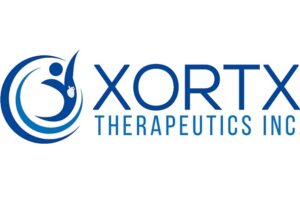 XORTX Therapeutics, a late-stage clinical pharmaceutical company focused on developing innovative therapies to treat progressive kidney disease, is pleased to announce the submission of a Patent Cooperation Treaty (PCT) patent application seeking international patent protection for the patent entitled “Compositions and Methods for Diagnosis, Treatment and Prevention of Kidney Disease”.
XORTX Therapeutics, a late-stage clinical pharmaceutical company focused on developing innovative therapies to treat progressive kidney disease, is pleased to announce the submission of a Patent Cooperation Treaty (PCT) patent application seeking international patent protection for the patent entitled “Compositions and Methods for Diagnosis, Treatment and Prevention of Kidney Disease”.
This patent is based on key discoveries by XORTX’s independent scientific research partners suggesting that an important diagnostic and therapeutic opportunity exists. This patent application builds upon new discoveries in polycystic disease and more specifically polycystic kidney disease (PKD) and proposes methods of diagnosing the risk associated with aberrant purine metabolism alone, or in combination with hyperuricemia in patients most at risk for accelerated kidney disease progression. Recent discoveries at XORTX and by its independent research laboratories, suggests that certain individuals, most at risk for accelerated kidney disease progression, may be identified, diagnosed, and treated based upon a novel risk profile. This new patent application proposes proprietary diagnostic methods, and potential therapeutic approaches for personalizing the medicines used to treat those most at risk of health consequences of aberrant purine metabolism in cystic kidney diseases.
Autosomal dominant polycystic kidney disease (ADPKD) is a genetically linked nephropathy and the fourth most common cause of kidney failure requiring renal replacement therapy. Two genes are associated with ADPKD, PKD1 and PKD2, with mutation of PKD1 having a higher prevalence (85% of cases), an accelerated progression and more severe renal disease. Mutations are inherited in an autosomal dominant manner and display a vast spectrum of clinical disease severity depending on the inherited mutation and other factors, including age and sex.
ADPKD features bilateral growth of multiple renal cysts. The presence of cysts in the kidney leads to increased kidney volume that results in high blood pressure, decreased glomerular filtration rate (GFR), and ultimately renal failure. In ADPKD, hyperuricemia is reported to be prevalent and is an independent risk factor for progression, total kidney volume (TKV), endothelial dysfunction (ED), and more rapid decrease in GFR. There is evidence that hyperuricemia mediates ED and the rate of progression of ADPKD. Uric acid crystalluria has also been associated recently with cyst genesis and cyst expansion, similarly xanthine oxidase (XO) enzyme expression in kidney tissue in two species of PKD suggest a tissue specific mechanism of injury unique to both tubule and cyst occurs in ADPKD. Because hyperuricemia is a modifiable risk factor, lowering and managing serum uric acid levels can decrease the rate of disease progression and maintain kidney health. In addition, intracellular inhibition of XO activity within the epithelial cells of both tubules and cysts in the kidney of individuals with progressing ADPKD tissue may optimally attenuate ADPKD disease progression and specifically slow increases in TKV and GFR decline. Therapeutic XO inhibition is anticipated to reduce the rate of decline of renal function in patients with ADPKD and hyperuricemia.
ADPKD is a rare disease that affects more that 10 million individuals worldwide. ADPKD is typically diagnosed based upon expansion of fluid-filled cysts in the kidneys. Over time, the increasing number and size of cysts can contribute to structural and functional changes to kidneys and is frequently accompanied by chronic pain which is a common problem for patients with ADPKD. Expansion of cysts is thought to compress healthy functioning tissue surrounding the cysts and contribute to further loss of kidney function, fibrosis, impaired nutrient exchange and impaired kidney function, accompanied later by end-stage renal disease. For individuals with progressing ADPKD, treatment recommendations include anti-hypertensive treatment, dietary restrictions, and, for a limited percentage of suitable patients, pharmacotherapy. New, more broadly applicable therapies to effectively slow decline of kidney function in ADPKD are needed.












